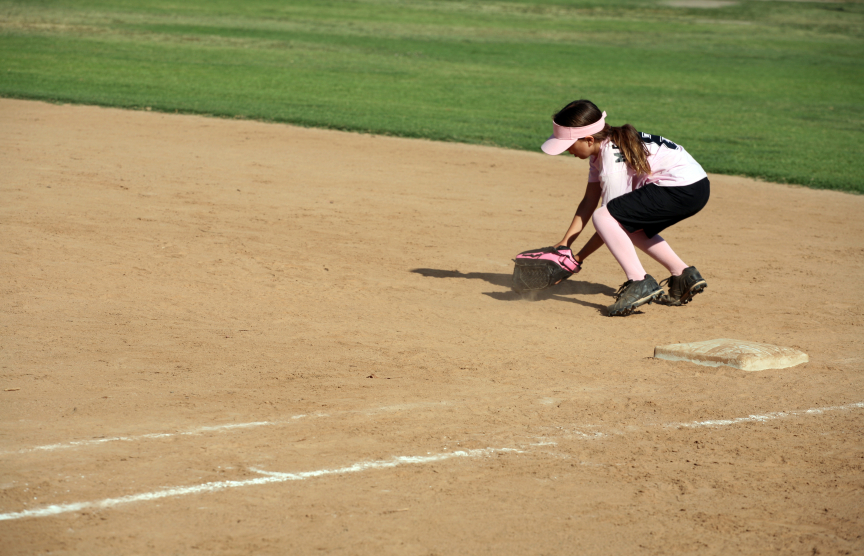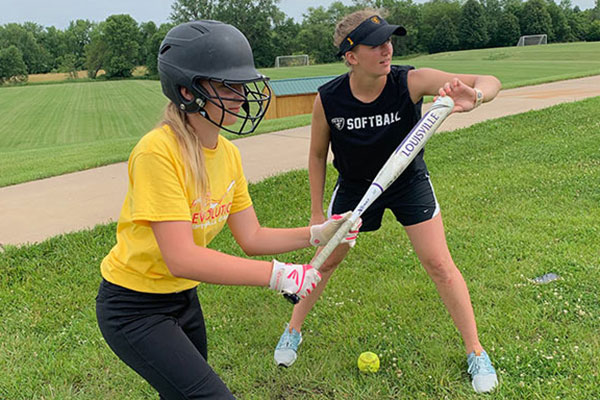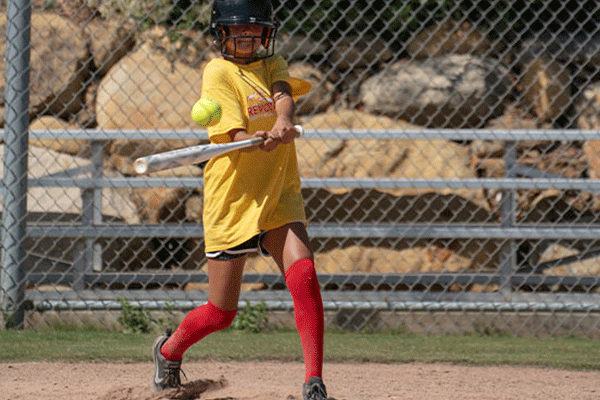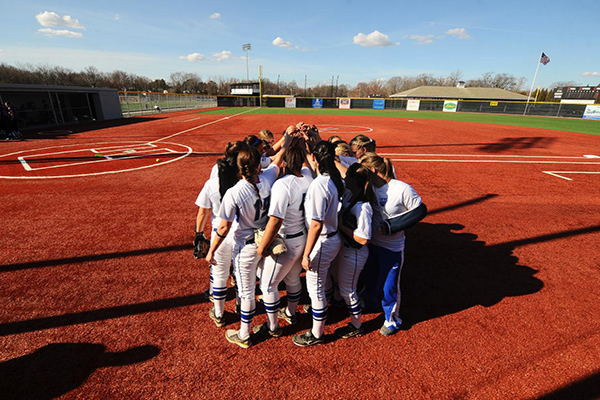9 Softball Tips To Improve Your Softball Game

One thing you’ll quickly learn about softball camp is that there’s always something to learn. Competitive players can always push themselves to better their play and make themselves more invaluable to the team, and that takes constant effort. This means that no matter how long you’ve been playing, there’s always a tip or two that you can add to your game to improve it. If you’re looking to get better at softball, here are 9 tips you can start putting into practice right away.
You can’t win a game if you’re not putting points on the board, so let’s start with offense.
Softball Tips for Offense
Change Your Grip Up
An at-bat is a tense moment, and in that moment you may feel tempted to tighten up your grip on the bat to ready yourself for impact. But be careful not to over-tighten your loaded position: Choking the bat can mean less power, reach, and control for any hitter. Instead, apply pressure with your fingers, with your dominant hand over your weaker one. Make sure your wrists stay nice and loose, so you get the control you want. Getting this grip down and hitting with it in one fluid motion will take some practice, but it’s worth it.
Don’t Second-Guess Your Swing
Up against a pitcher who’s giving you problems? Thinking about switching your batting stance up to better address the ball? Don’t–you’ll end up with an even worse stance than before. In a situation like this, it’s much better to stick with what you’ve worked on in batting practice than to try something totally untested and possibly weak. You know your stance fundamentals (feet shoulder-width apart, weight centered, bat shouldered, lead arm at a 90-degree angle) and you know your swing will come directly from your stance, so the middle of an at-bat is not the time to experiment with either. At softball camp, you have access to qualified NCAA coaches, so if your swing needs help, let your coach instruct you so.
Watch The Ball
Don’t roll your eyes just yet. Yes, “Keep your eye on the ball” is one of the most commonly-heard pieces of advice for softball. It’s so common, in fact, that it’s incredibly easy to ignore if you’re not consciously trying to keep it up. When you’re given a pitch, you may be tempted to glance at your grip, first base, the outfield, or essentially anything that isn’t the ball. If you’re an inexperienced hitter, you may even be tempted to close your eyes. This is an urge you need to resist if you want to make contact. Yes, you’ll need to be aware of your grip and the position of your on-base teammates and opposing outfielders, but facing down a pitch is not the time to check!
Swing With Your Hips
Much of your swing’s power will come from the movement of your hips. Focus on your arms and you’ll end up overextending them or bending them awkwardly, taking power away from your hit. Rotating your hips and front-facing shoulder will give you a smoother, rounder swing that’ll have a much better impact when you make contact.
Touch EVERY Base!
There are plenty of baserunning tips to be had in the world of softball, but this one, basic as it is, is one of the most important. You don’t get credit for making a base if you don’t actually contact the base, but in the heat of the moment some runners can forget that and trot right by. All the intelligent baserunning advice in the world won’t help you if you don’t contact the bases, so don’t let your efforts and the efforts of your teammates go to waste. Make a deliberate effort to contact every base as you round them!
Now that we’ve had a few offensive tips, let’s take a quick look at one of the most important parts of the game: defense.
Softball Tips for Defense
Never Stop Paying Attention!
If you’re playing certain fielding positions, it can be easy to drift off and get distracted, especially if you go innings without being part of the action. But letting yourself get distracted is a surefire way to commit errors when the action does come back around to your side of the softball field, and it massively dulls your reaction time. Stay vigilant!
Use Two Hands To Collect The Ball Whenever You Can
Any ball that can be comfortably collected with two hands needs to be. Using a two-handed approach to collect things like grounders, pop-ups and short or slow flys may not look flashy, but it ensures you don’t accidentally let the ball roll out of your glove. If the only way to secure a ball is one-handed, then by all means go for it, but using two-handed catches when possible ensures you don’t make errors on balls you really ought to be catching.
Make A Plan Pre-Pitch
Before the ball is in play, put together a quick mental plan of what you’ll do if the action comes to you. Sure, if the ball flies to you, you’ll want to catch it, but what then? Do you go for the double play or just play it safe? What if the ball’s a grounder? If the ball takes a teammate out of position, how will you cover them? You don’t need to know absolutely everything about your actions–after all, thinking clearly on the fly is part of what makes a good softball player great, but having a general idea of what to do will help you execute it when the time comes.
Make The Ball Come Straight At You
Fielding any kind of ball is easier if the ball comes right towards your front. Obviously you can’t affect the way a hit ball travels, so instead you’ll have to move! When the ball comes at you, shift your positioning if you have time. This makes it much easier to receive the ball, and it helps you ready yourself for the throw as well. Reaching away to get balls will make the post-catch throw awkward and lessens the chance of you even catching the ball to begin with. Be ready to move!
Of course, this is far from comprehensive. There’s still a world of excellent information out there, and if you’re looking to learn in-depth how to take your game to the next level, a summer softball camp may be just what you’re looking for. Besides having the chance to learn from NCAA softball coaches, you’ll have the chance to participate in a variety of offensive, defensive, and situational softball drills against other great softball players



